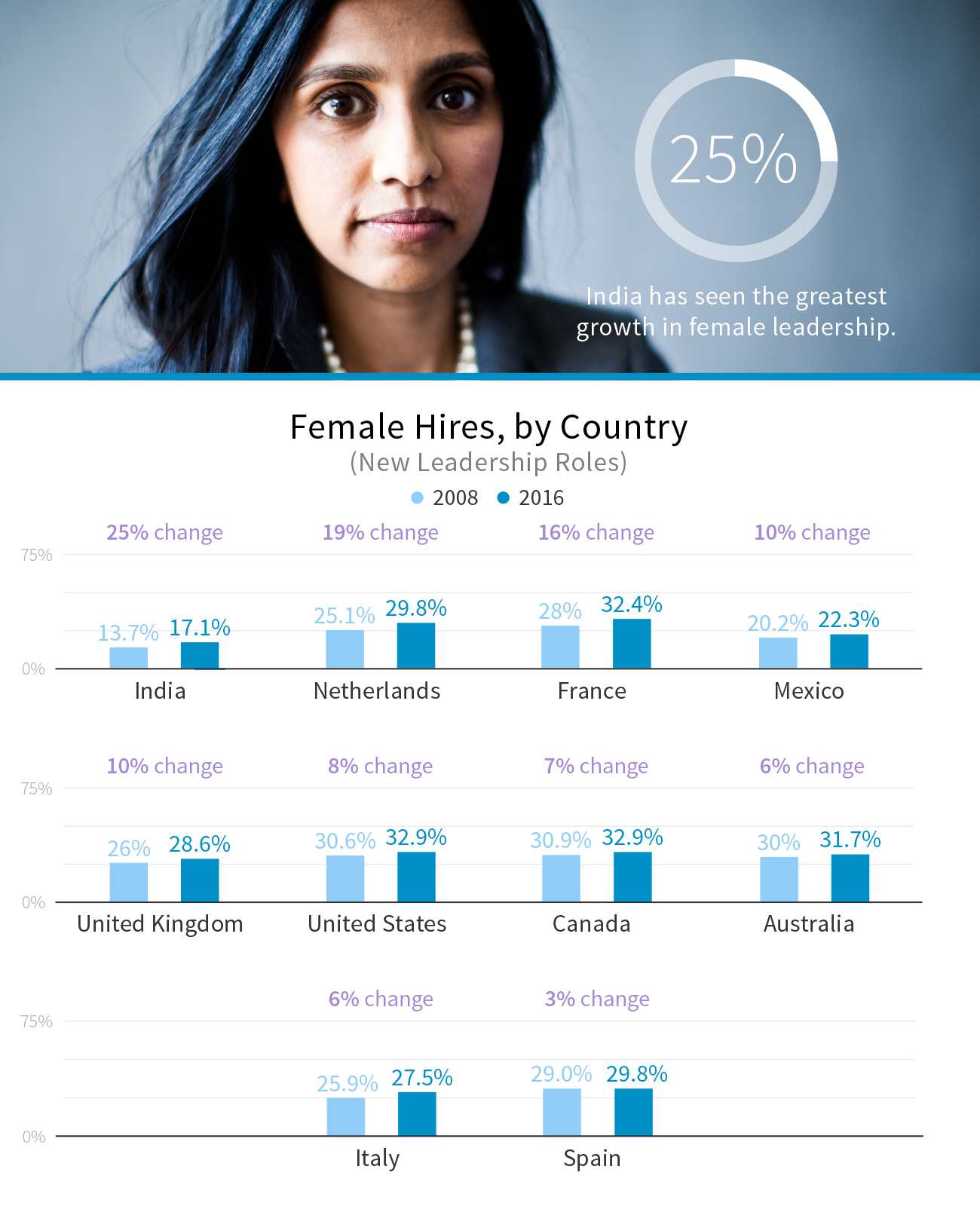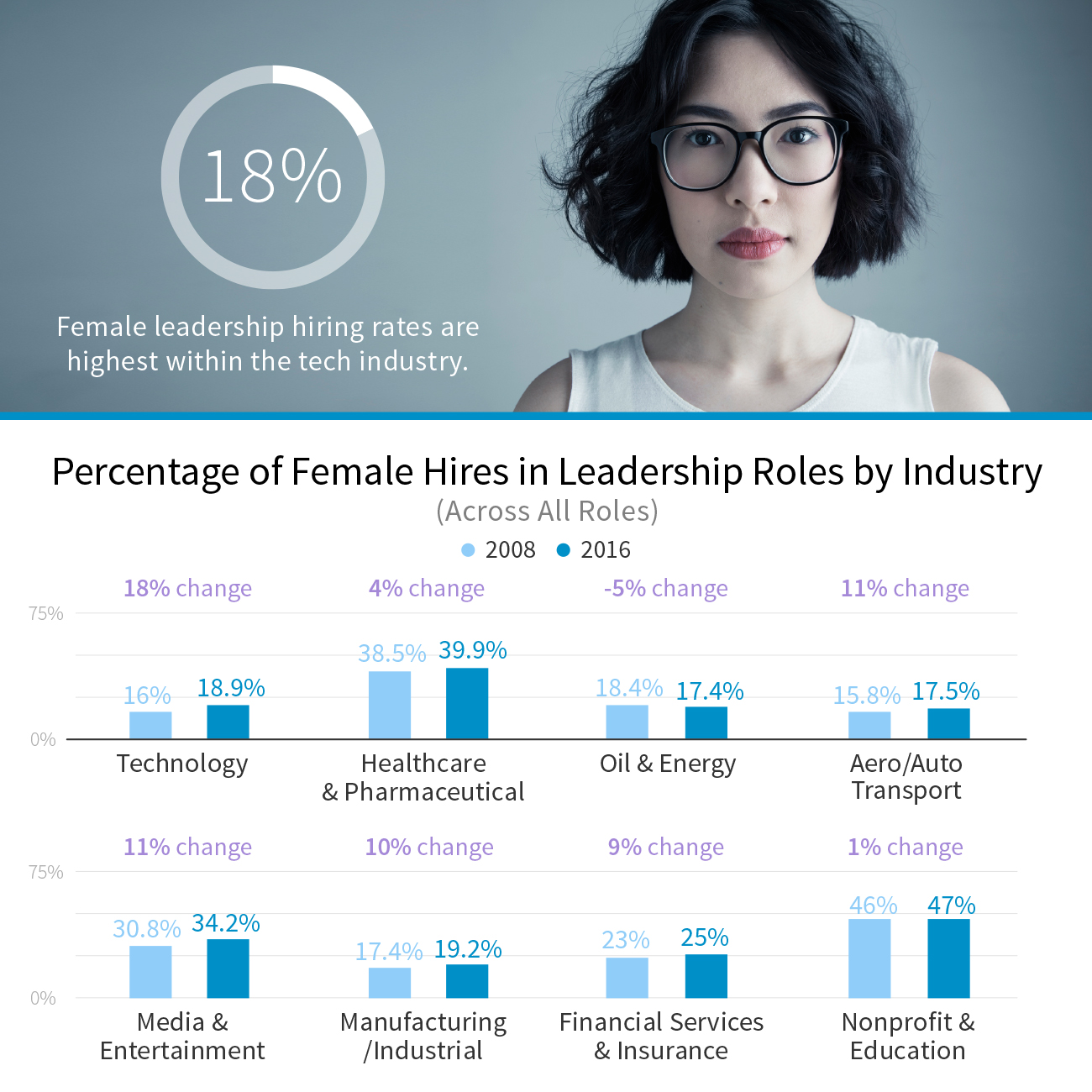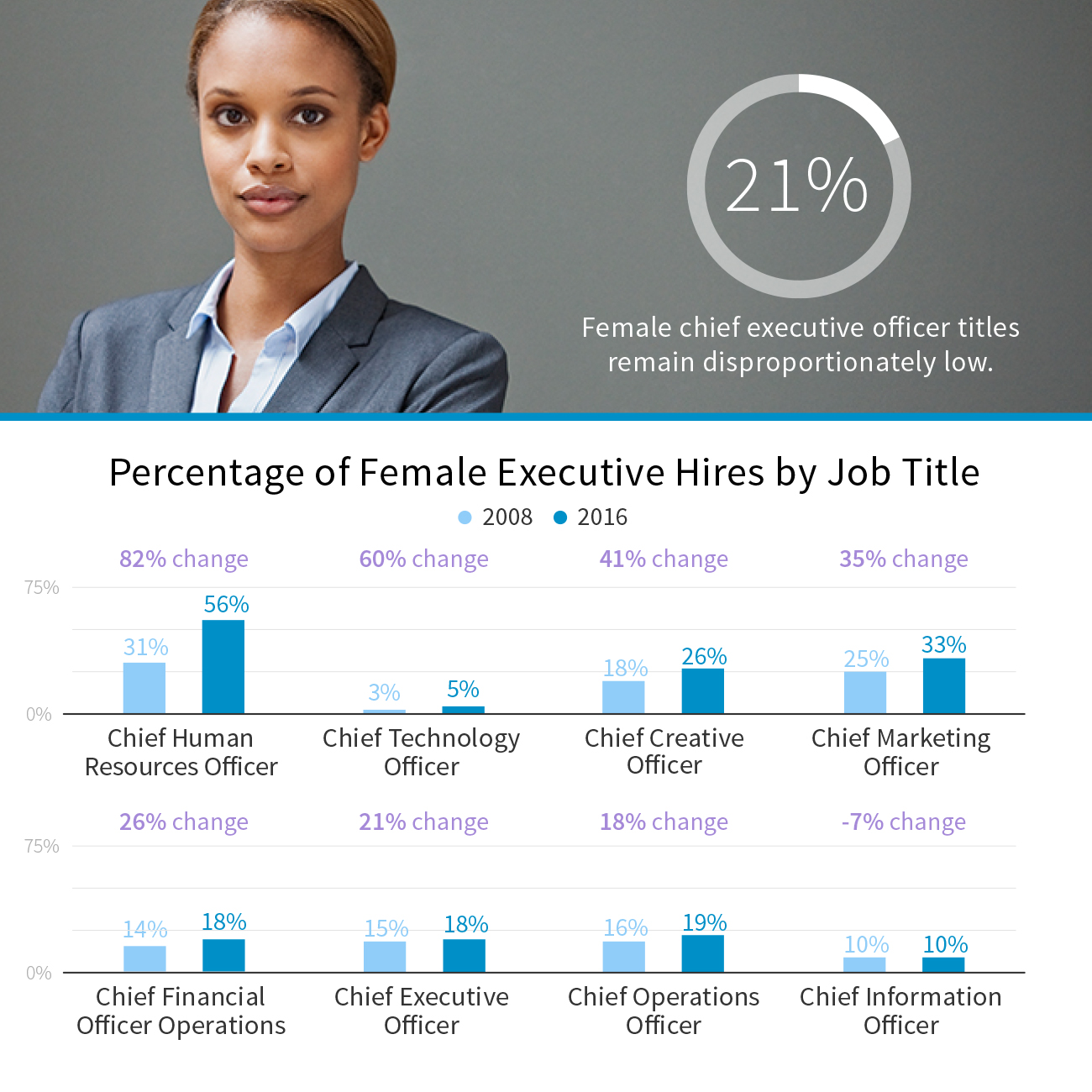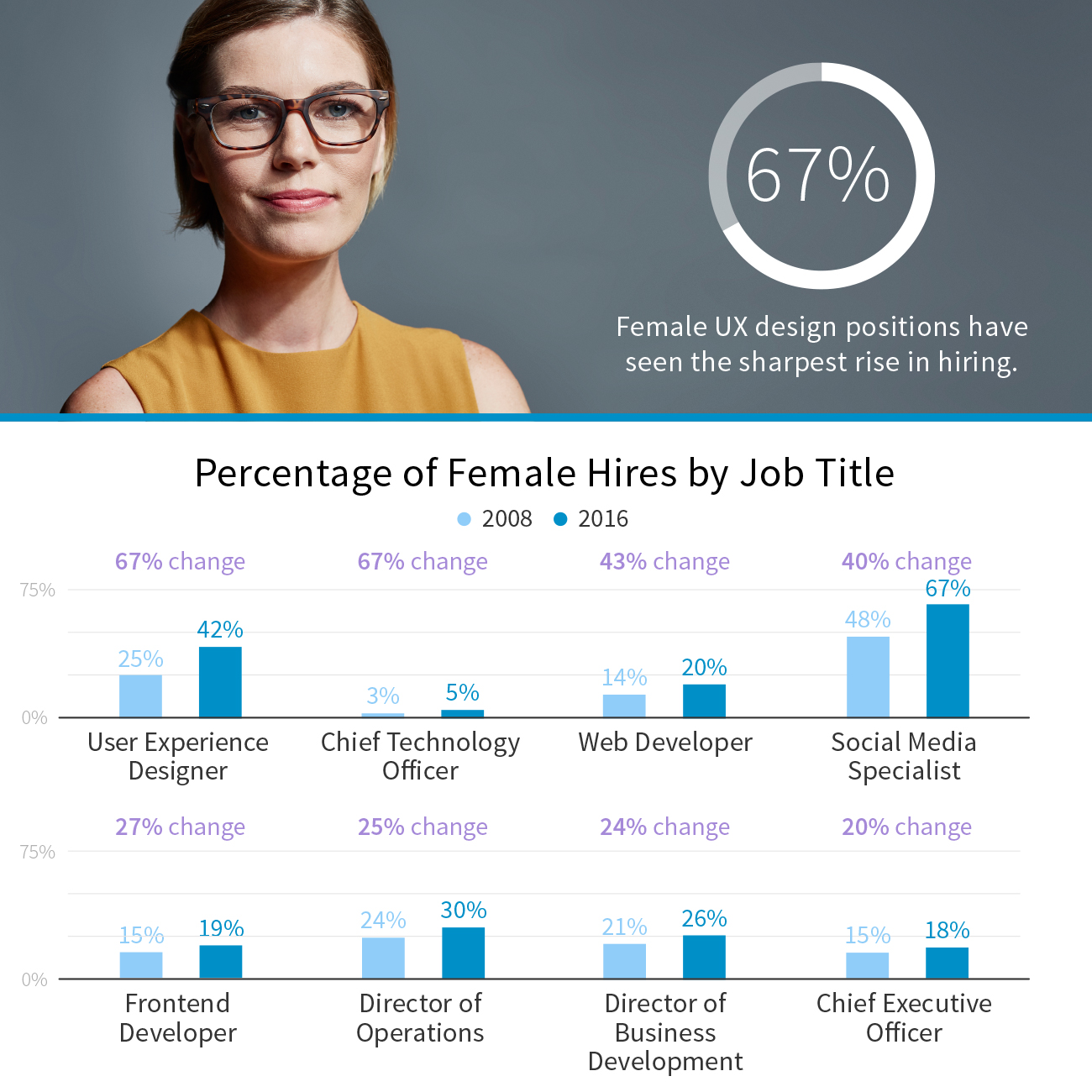International Women’s Day: Celebrating the Progress of Women Leaders in the Workplace

Gender inequality in the workplace remains prominent, but there has been progress made in hiring women into leadership roles, according to LinkedIn data.
On March 8th, LinkedIn will join the world in celebrating International Women’s Day. We are committed to creating a more gender-inclusive world, and believe that data can help us think critically about the current state of the professional gender gap, and how to close it. We analyzed millions of LinkedIn profiles to see the industries, job titles and countries where women are thriving, and to help identify barriers the global workforce still needs to overcome.
Women leaders are on the rise globally
Since 2008, more women have been hired into leadership positions around the world. While there is still a gap, we are seeing significant strides, and women in leadership now hold an average of just over 25% of all leadership positions globally. Our data shows that India, which has historically lagged in hiring women into leadership positions, has gained significant momentum with the largest percentage increase being hired into leadership roles (25%).
Out of the 10 countries in our analysis Canada, the United States and France have the highest percentage of women in leadership, with an average of one third of women holding leadership roles director-level and above.
Education and nonprofit industries close leadership gap and tech sector gains momentum
The education and nonprofit sector is leading the way in closing the gap between male and female leaders. In this sector, women are being hired for 47% of leadership positions. Healthcare and pharmaceuticals also has a high number of women in leadership with 40% of women being hired into leadership positions.
It may come as a surprise that the technology industry saw the largest change with a 18% increase in female leaders hired. Conversely, the oil and energy industry reduced its hiring of women leaders by 5%.
Women CEOs make up only 18% of the workforce
In the C-suite, the single role that women hold more than or equivalent to men is Chief Human Resource Officer (56%, which is an increase of 82% since 2008). In contrast, women CEOs still make up only 18% of the workforce. At the director-level, hiring for women in the Director of Information Technology role has increased by 57% since 2008.
More women entering tech
We also evaluated the roles women were being hired into overall. Interestingly, women being hired into technology jobs is on the rise. The top three job titles that have seen the strongest growth are all technology roles: User Experience Designer (67% increase), Chief Technology Officer (60% increase) and Web Developer (40% increase).
Management and leadership top skills for women leaders
To determine attributes of women leaders, we also looked at the most common skills based on LinkedIn profiles. Management and leadership top the list of skills for women in leadership positions. Interestingly, customer service and public speaking also ranked highly.
- Management
- Leadership
- Strategic planning
- Customer service
- Public speaking
- Marketing
- Project management
- Social media
- Event planning
- Research
You can brush up on all of these skills on LinkedIn Learning. We’ve also created learning paths and courses to help you gain expertise on the most common skills among women in leadership positions.
Gender equality at work is a growing priority
Our data shows that diversity and inclusion is becoming a priority for companies worldwide. More than 37% of talent acquisition leaders believe that diversity will be the number one trend defining the future of hiring. Furthermore, our data shows there has been a 35% increase in global hires made with diversity job titles over the past eight years. This could reflect an increased emphasis from business leaders looking to close the gender gap, particularly at the senior levels.
While companies have made strides globally in bridging the gender gap in the workplace, there is still a lot of work to be done. One of the key aspects to closing the gender gap is to identify where we’ve made progress, tackle obstacles to close the leadership gap, and provide resources to help create leadership paths for women.
Join us in celebrating International Women’s Day. We all stand on the shoulders of those who came before us, so take a minute today to recognize someone who has paved the way for you. @ mention women leaders on LinkedIn who have inspired you in your career with the hashtag #IWD2017.
Methodology
The results of this analysis represent the world as seen through the lens of LinkedIn data. As such, it is influenced by how members choose to use the site, which can vary based on professional, social, and regional culture, as well as overall site availability and accessibility. These variances were not accounted for in the analysis.
Keen observers will note that there is no field for gender on the LinkedIn profile. We have inferred the gender of members included in this analysis by classifying their first names as either male or female. Members whose gender could not be inferred from their first names weren’t included in the analysis. Additionally, we excluded all members in countries where less than 67% of the respective member base could be classified as either male or female, to account for coverage lapses in our gender classifier.
Members in leadership positions were defined as those who have a seniority of director, vice president, CXO, owner, or partner. Trends in diversity job titles were determined based on members whose job title included the words “diversity” or “inclusion.”






Leave a Reply
Want to join the discussion?Feel free to contribute!